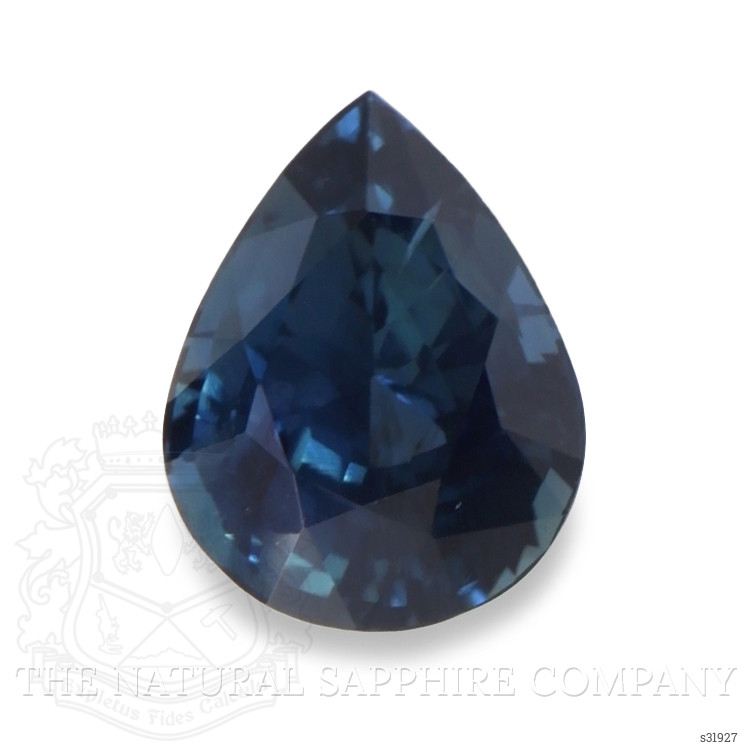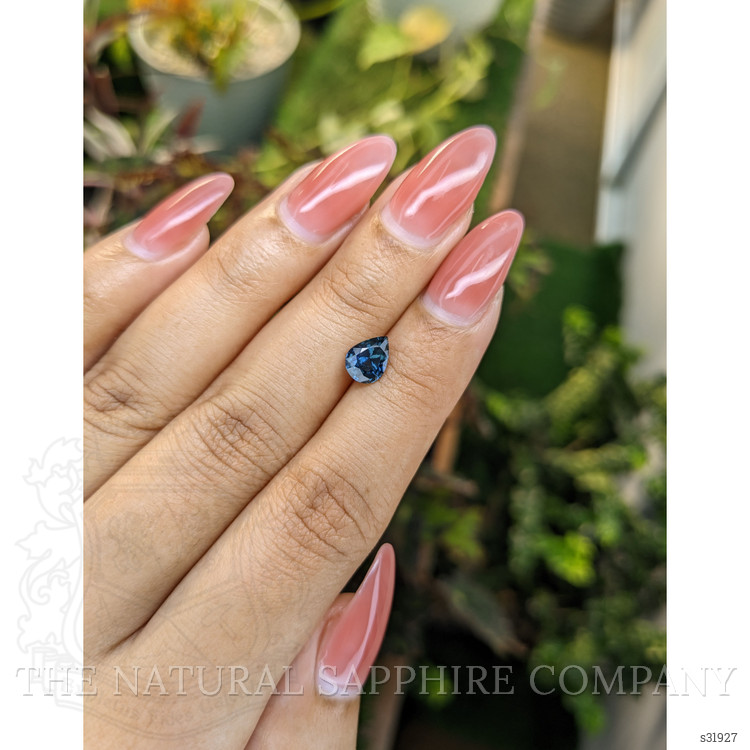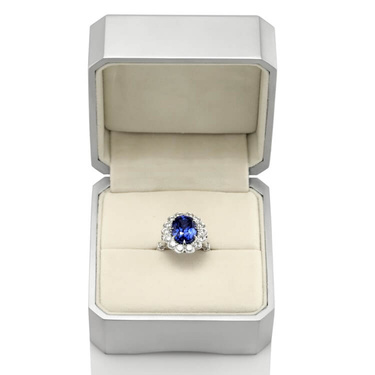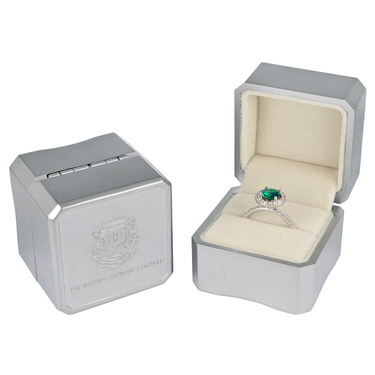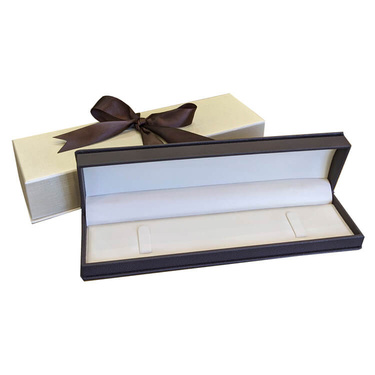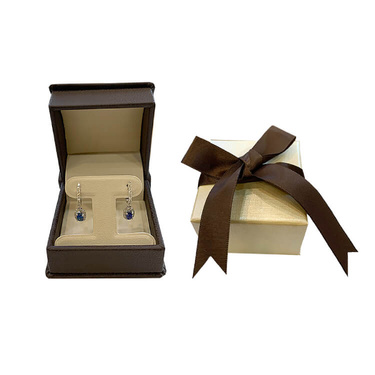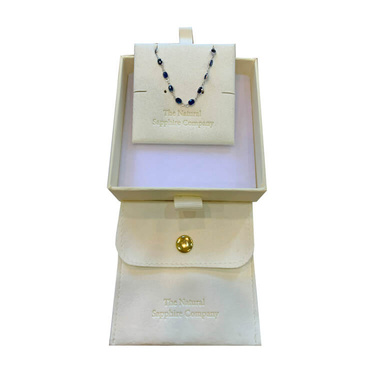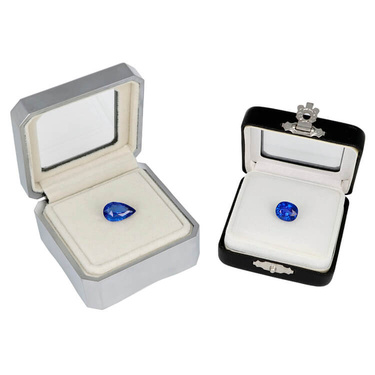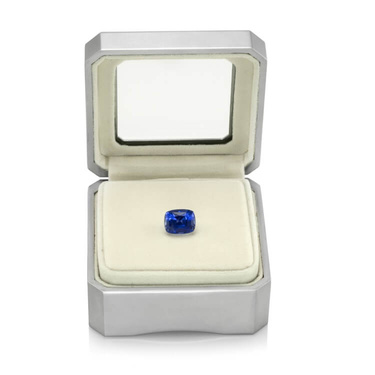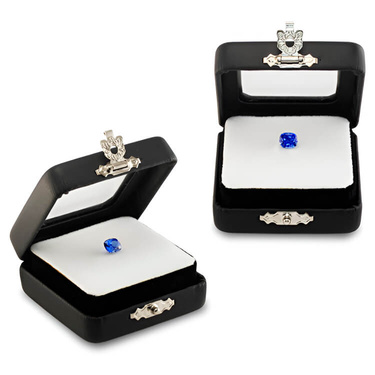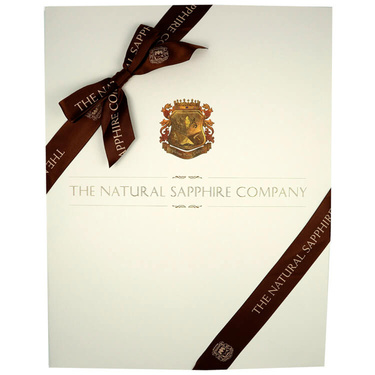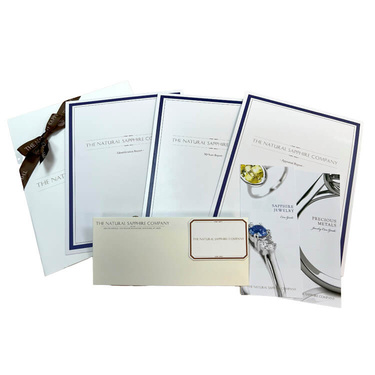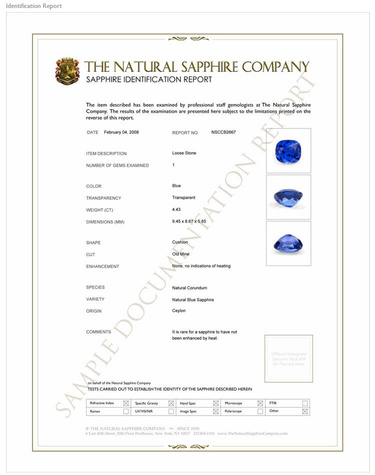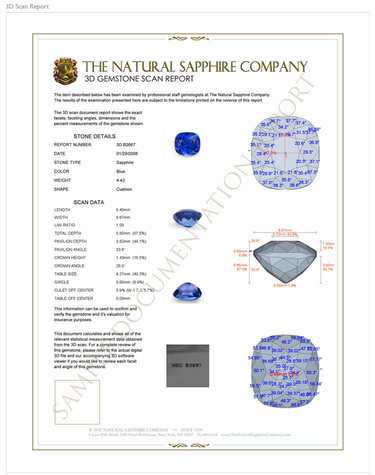- Stone14
- Reports3
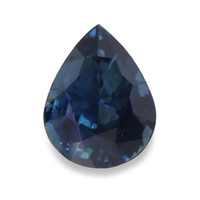



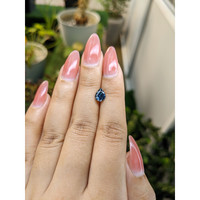
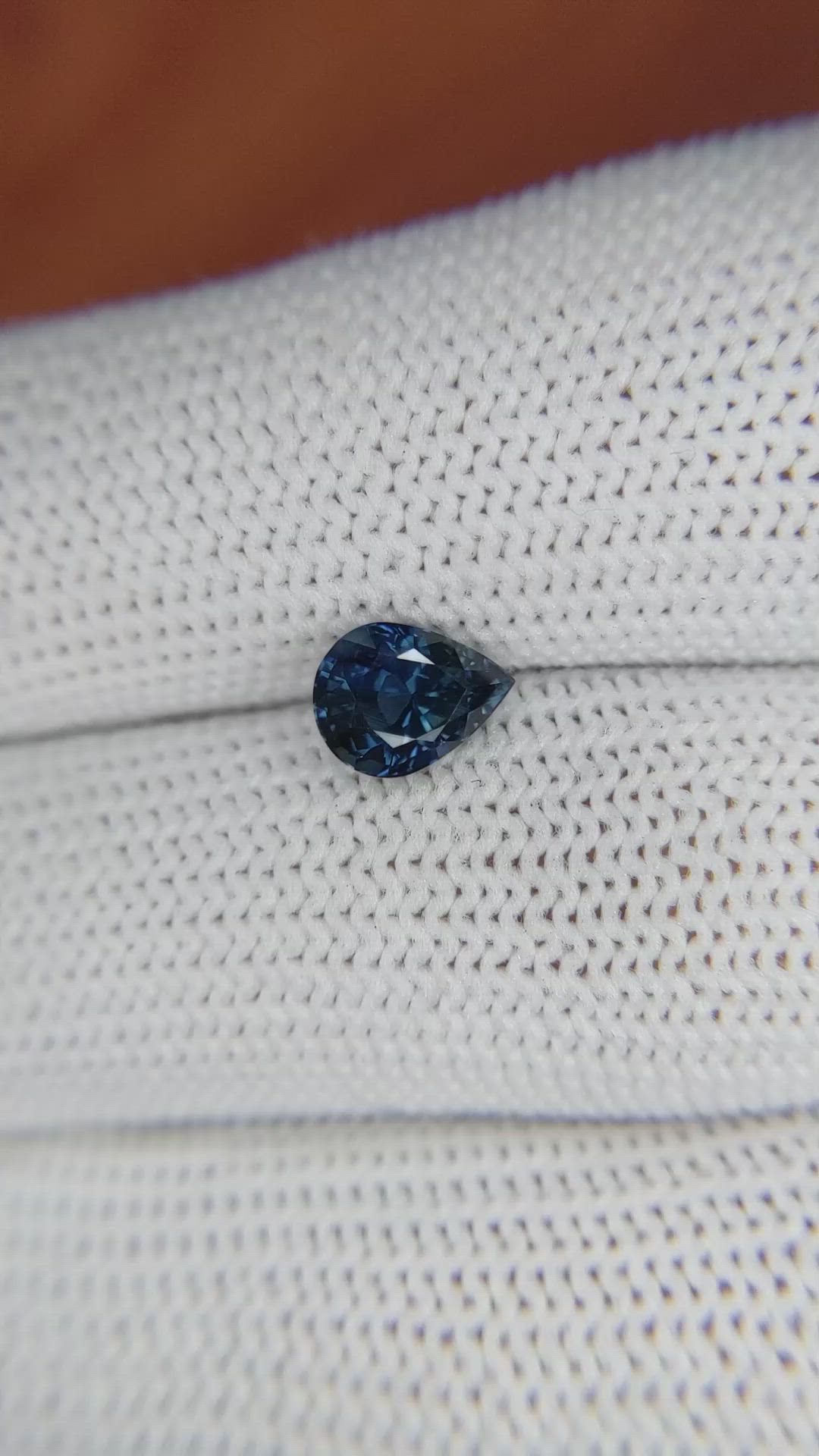
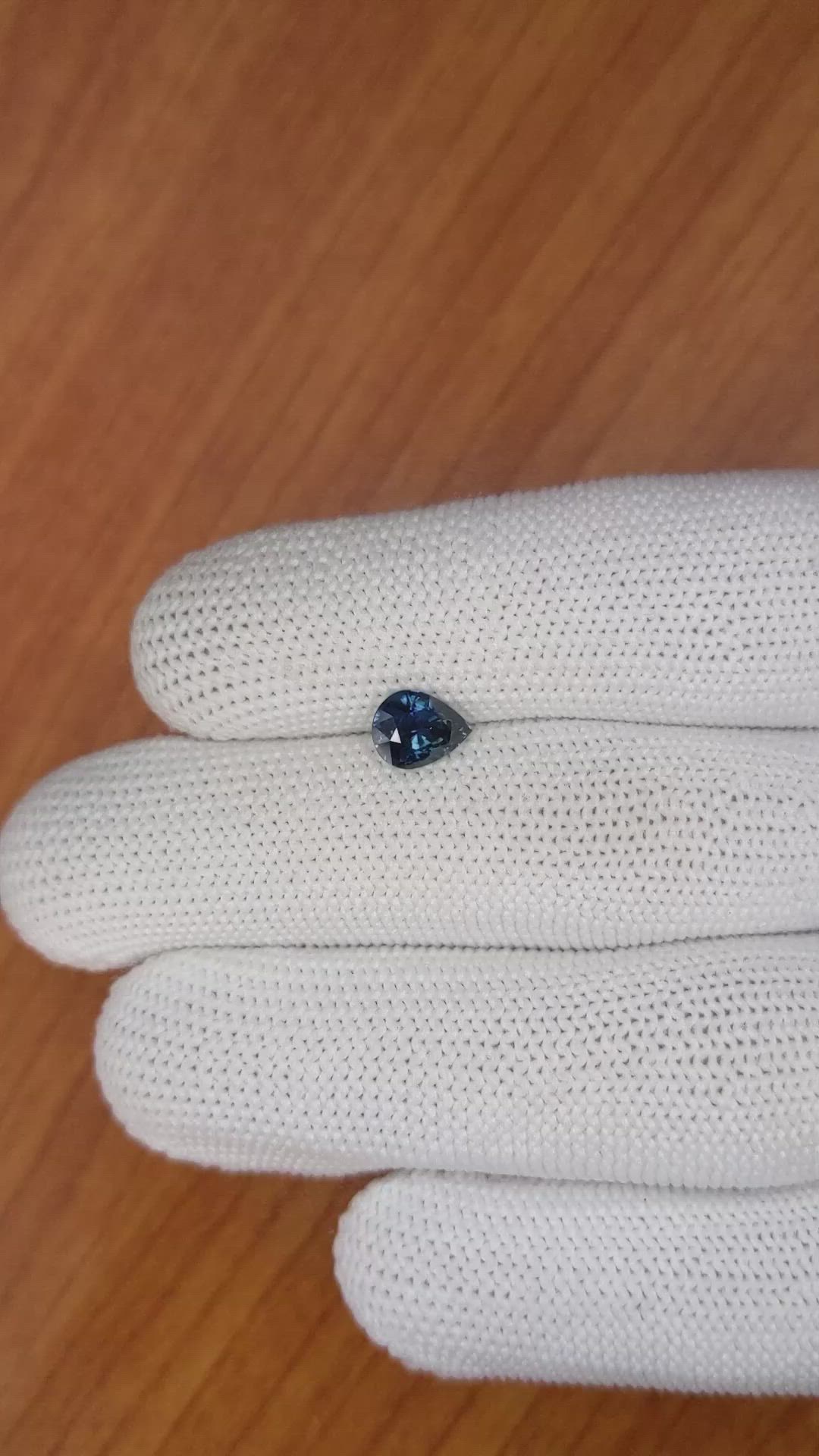
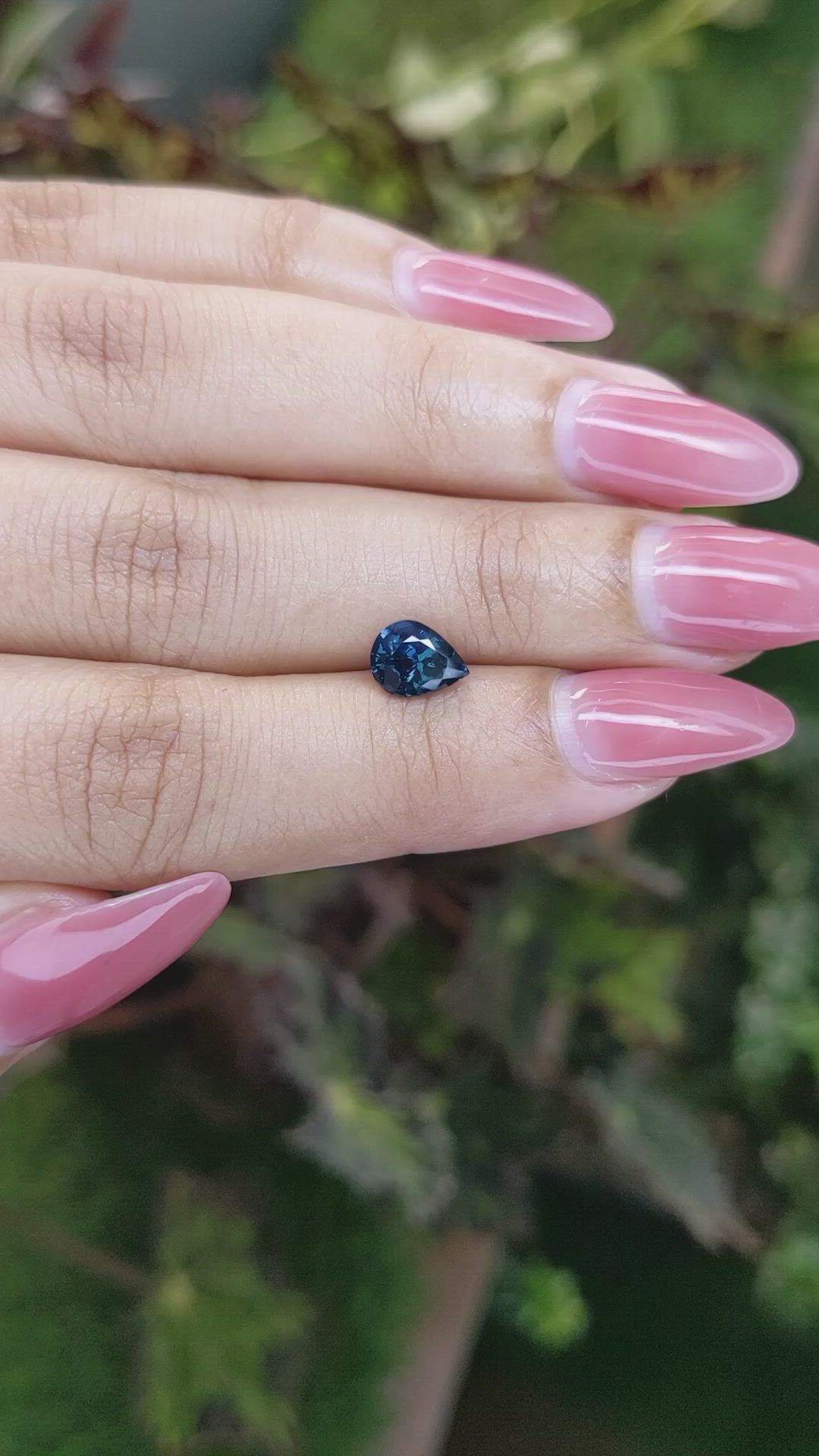






1.21 Ct. Greenish Blue Sapphire from Madagascar
This loose stone ships by Nov 22
Item ID: | S31927 |
|---|---|
Dimensions (MM): help | Length: 7.57 Width: 5.75 Height: 3.97 |
Weight: | 1.21 Ct. |
Color: help | Greenish Blue |
Color intensity: help | Dark |
Clarity: help | Very Very Slightly Included |
Shape: help | Pear |
Cut: | Mixed Brilliant |
Cutting style: | Faceted |
Enhancements: help | No Enhancement |
Origin: help | Madagascar |
Per carat price: help | $1,108 |
This 1.21 carat pear shape greenish blue sapphire is a finely proportioned natural gem offered by The Natural Sapphire Company, with precise dimensions of 7.57 by 5.75 by 3.97 millimeters. The stone is transparent, cut in a mixed brilliant style that combines facets designed to maximize scintillation and face up brightness, and it is presented with an excellent polish that gives crisp facet junctions and lively surface reflections. The clarity has been evaluated as very very slightly included at eye level, which means that the stone appears clean and free of distracting features to the unaided eye while retaining microscopic characteristics that confirm its natural origin. Color intensity is described as dark, a saturation level that gives this sapphire a deep, sophisticated presence which reads as greenish blue depending on lighting and surrounding metals. Importantly for collectors and connoisseurs, the stone has had no enhancement, a factor that materially affects rarity and market desirability, and it hails from Madagascar, a well respected source known for producing sapphires with appealing color ranges and natural character.
The greenish blue hue in this sapphire is a compelling balance between blue and subtle green overtones, a palette that is often sought by buyers looking for something distinct from classic pure blue sapphires. Madagascar sapphires can exhibit this range because of their trace element chemistry, chiefly combinations of iron and titanium, which influence tone and saturation. The description of dark color intensity indicates that the gem has strong saturation and a moderately deep tone, so the color will read rich and velvety in most settings, particularly when set against white metals like platinum or white gold, and will take on a slightly different appearance against yellow gold where the warmth of the metal can bring out the greenish nuances. Because this sapphire is untreated, meaning no heat or diffusion enhancement has been applied, it carries intrinsic value for collectors and buyers who prioritize natural stones, and it often commands a premium relative to treated material of similar color and clarity.
From a cutting and visual performance standpoint, the mixed brilliant cut and the given proportions impart several practical advantages. With an overall length and width of 7.57 by 5.75 millimeters, the gem presents a classic pear silhouette that is versatile for rings, pendants, and bespoke jewelry designs, offering a flattering elongated face up that can accentuate finger length or create elegant drop motions in earrings. The 3.97 millimeter depth gives a depth percentage in the range that is typical for well cut pearls and other fancy shapes, helping balance light return versus depth of body color. The mixed brilliant approach typically places brilliant facets on the crown to enhance scintillation and a faceted pavilion designed to control light leakage and return, which is especially effective in stones with darker tone because it can increase perceived brilliance without washing out the color. The excellent polish contributes to crisp light performance and allows viewers to appreciate the stone’s transparency and internal structure. The clarity grading of very very slightly included at eye level indicates only minor internal features that do not detract from the gem’s beauty, and such minimal inclusions are often internally interesting to gemmologists while remaining invisible to wearers in everyday viewing.
Durability and practical wear considerations are important for any savvy buyer, and on the Mohs hardness scale this sapphire ranks as corundum at hardness 9, second only to diamond which is 10, and equal to ruby, another corundum variety. To put that into practical context, sapphires are substantially harder and more scratch resistant than quartz which is hardness 7, and topaz which is hardness 8, so they are exceptionally well suited to daily wear in engagement rings and other frequently worn pieces. Hardness does not equal toughness, and while sapphire is very hard it can still chip at points of acute stress, which is why a pear shape with a tapered point benefits from protective design choices such as a prong that shields the tip, a bezel setting over the point, or a V prong for additional security. Routine care is straightforward, warm soapy water and a soft brush will maintain the gem’s polish and remove oils, and while the stone’s untreated status means it does not require special handling to preserve artificial enhancements, it is wise to avoid sudden impacts and to have rings checked periodically for secure settings. For the educated buyer this combination of untreated origin, excellent polish, very very slight inclusions at eye level, and a Mohs hardness of 9 makes this Madagascar greenish blue pear sapphire both a durable practical choice and a collectible natural specimen.
When considering the broader investment and aesthetic factors, this sapphire offers attributes that appeal to both discriminating collectors and customers who want an enduring centerpiece for bespoke jewelry. Its weight of 1.21 carats and elegant pear dimensions allow it to serve as a striking solitaire or to be paired with accent diamonds or colored gemstones to accentuate its greenish blue tone, and the mixed brilliant cut contributes visual performance that belies the stone’s darker saturation. The fact that The Natural Sapphire Company presents this stone as unenhanced and from Madagascar is particularly meaningful to buyers who prioritize provenance and natural state, as untreated sapphires from recognized origins are less common and often more highly prized. If you are comparing options in a considered purchase, this gem balances attractive face up presence, excellent optical finish, and the enduring toughness of corundum, making it suitable for everyday wear while retaining the rarity and natural character that experienced buyers appreciate.





